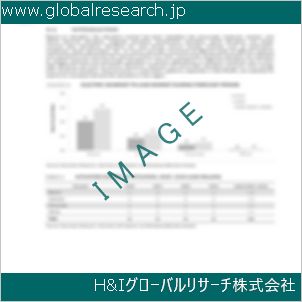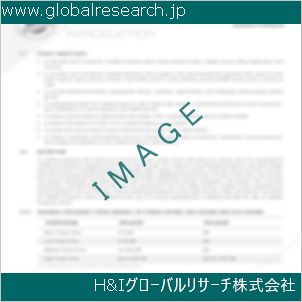Table of Contents
1 Industry Overview of Eosine
1.1 Definition and Specifications of Eosine
1.1.1 Definition of Eosine
1.1.2 Specifications of Eosine
1.2 Classification of Eosine
1.3 Applications of Eosine
1.3.1 Nuclear Application
1.3.2 Non-Nuclear Application
1.4 Industry Chain Structure of Eosine
1.5 Industry Overview and Major Regions Status of Eosine
1.5.1 Industry Overview of Eosine
1.5.2 Global Major Regions Status of Eosine
1.6 Industry Policy Analysis of Eosine
1.7 Industry News Analysis of Eosine
2 Manufacturing Cost Structure Analysis of Eosine
2.1 Raw Material Suppliers and Price Analysis of Eosine
2.2 Equipment Suppliers and Price Analysis of Eosine
2.3 Labor Cost Analysis of Eosine
2.4 Other Costs Analysis of Eosine
2.5 Manufacturing Cost Structure Analysis of Eosine
2.6 Manufacturing Process Analysis of Eosine
3 Technical Data and Manufacturing Plants Analysis of Eosine
3.1 Capacity and Commercial Production Date of Global Eosine Major Manufacturers in 2023
3.2 Manufacturing Plants Distribution of Global Eosine Major Manufacturers in 2023
3.3 R&D Status and Technology Source of Global Eosine Major Manufacturers in 2023
3.4 Raw Materials Sources Analysis of Global Eosine Major Manufacturers in 2023
4 Capacity, Production and Revenue Analysis of Eosine by Regions, Types and Manufacturers
4.1 Global Capacity, Production and Revenue of Eosine by Regions 2019-2024
4.2 Global and Major Regions Capacity, Production, Revenue and Growth Rate of Eosine 2019-2024
4.3 Global Capacity, Production and Revenue of Eosine by Types 2019-2024
4.4 Global Capacity, Production and Revenue of Eosine by Manufacturers 2019-2024
5 Price, Cost, Gross and Gross Margin Analysis of Eosine by Regions, Types and Manufacturers
5.1 Price, Cost, Gross and Gross Margin Analysis of Eosine by Regions 2019-2024
5.2 Price, Cost, Gross and Gross Margin Analysis of Eosine by Types 2019-2024
5.3 Price, Cost, Gross and Gross Margin Analysis of Eosine by Manufacturers 2019-2024
6 Consumption Volume, Consumption Value and Sale Price Analysis of Eosine by Regions, Types and Applications
6.1 Global Consumption Volume and Consumption Value of Eosine by Regions 2019-2024
6.2 Global and Major Regions Consumption Volume, Consumption Value and Growth Rate of Eosine 2019-2024
6.3 Global Consumption Volume and Consumption Value of Eosine by Types 2019-2024
6.4 Global Consumption Volume and Consumption Value of Eosine by Applications 2019-2024
6.5 Sale Price of Eosine by Regions 2019-2024
6.6 Sale Price of Eosine by Types 2019-2024
6.7 Sale Price of Eosine by Applications 2019-2024
6.8 Market Share Analysis of Eosine by Different Sale Price Levels
7 Supply, Import, Export and Consumption Analysis of Eosine
7.1 Supply, Consumption and Gap of Eosine 2019-2024
7.2 Global Capacity, Production, Price, Cost, Revenue, Supply, Import, Export and Consumption of Eosine 2019-2024
7.3 USA Capacity, Production, Price, Cost, Revenue, Supply, Import, Export and Consumption of Eosine 2019-2024
7.4 EU Capacity, Production, Price, Cost, Revenue, Supply, Import, Export and Consumption of Eosine 2019-2024
7.5 China Capacity, Production, Price, Cost, Revenue, Supply, Import, Export and Consumption of Eosine 2019-2024
7.6 Japan Capacity, Production, Price, Cost, Revenue, Supply, Import, Export and Consumption of Eosine 2019-2024
8 Major Manufacturers Analysis of Eosine
8.1 Manufacturer One
8.1.1 Company Profile
8.1.2 Product Picture and Specifications
8.1.2.1 Type I
8.1.2.2 Type II
8.1.2.3 Type III
8.1.3 Capacity, Production, Price, Cost, Gross and Revenue
8.1.4 Contact Information
8.2 Manufacturer Two
8.2.1 Company Profile
8.2.2 Product Picture and Specifications
8.2.2.1 Type I
8.2.2.2 Type II
8.2.2.3 Type III
8.2.3 Capacity, Production, Price, Cost, Gross and Revenue
8.2.4 Contact Information
8.3 Manufacturer Three
8.3.1 Company Profile
8.3.2 Product Picture and Specifications
8.3.2.1 Type I
8.3.2.2 Type II
8.3.2.3 Type III
8.3.3 Capacity, Production, Price, Cost, Gross and Revenue
8.3.4 Contact Information
8.4 Manufacturer Four
8.4.1 Company Profile
8.4.2 Product Picture and Specifications
8.4.2.1 Type I
8.4.2.2 Type II
8.4.2.3 Type III
8.4.3 Capacity, Production, Price, Cost, Gross and Revenue
8.4.4 Contact Information
8.5 Manufacturer Five
8.5.1 Company Profile
8.5.2 Product Picture and Specifications
8.5.2.1 Type I
8.5.2.2 Type II
8.5.2.3 Type III
8.5.3 Capacity, Production, Price, Cost, Gross and Revenue
8.5.4 Contact Information
…
9 Marketing Trader or Distributor Analysis of Eosine
9.1 Marketing Channels Status of Eosine
9.2 Traders or Distributors with Contact Information of Eosine by Regions
9.3 Ex-work Price, Channel Price and End Buyer Price Analysis of Eosine
9.4 Regional Import, Export and Trade Analysis of Eosine
10 Industry Chain Analysis of Eosine
10.1 Upstream Major Raw Materials Suppliers Analysis of Eosine
10.1.1 Major Raw Materials Suppliers with Contact Information Analysis of Eosine
10.1.2 Major Raw Materials Suppliers with Supply Volume Analysis of Eosine by Regions
10.2 Upstream Major Equipment Suppliers Analysis of Eosine
10.2.1 Major Equipment Suppliers with Contact Information Analysis of Eosine
10.2.2 Major Equipment Suppliers with Product Pictures Analysis of Eosine by Regions
10.3 Downstream Major Consumers Analysis of Eosine
10.3.1 Major Consumers with Contact Information Analysis of Eosine
10.3.2 Major Consumers with Consumption Volume Analysis of Eosine by Regions
10.4 Supply Chain Relationship Analysis of Eosine
11 Development Trend of Analysis of Eosine
11.1 Capacity, Production and Revenue Forecast of Eosine by Regions and Types
11.1.1 Global Capacity, Production and Revenue of Eosine by Regions 2024-2029
11.1.2 Global and Major Regions Capacity, Production, Revenue and Growth Rate of Eosine 2024-2029
11.1.3 Global Capacity, Production and Revenue of Eosine by Types 2024-2029
11.2 Consumption Volume and Consumption Value Forecast of Eosine by Regions, Types and Applications
11.2.1 Global Consumption Volume and Consumption Value of Eosine by Regions 2024-2029
11.2.2 Global and Major Regions Consumption Volume, Consumption Value and Growth Rate of Eosine 2024-2029
11.2.3 Global Consumption Volume and Consumption Value of Eosine by Types 2024-2029
11.2.4 Global Consumption Volume and Consumption Value of Eosine by Applications 2024-2029
11.3 Supply, Import, Export and Consumption Forecast of Eosine
11.3.1 Supply, Consumption and Gap of Eosine 2024-2029
11.3.2 Global Capacity, Production, Price, Cost, Revenue, Supply, Import, Export and Consumption of Eosine 2024-2029
11.3.3 USA Capacity, Production, Price, Cost, Revenue, Supply, Import, Export and Consumption of Eosine 2024-2029
11.3.4 EU Capacity, Production, Price, Cost, Revenue, Supply, Import, Export and Consumption of Eosine 2024-2029
11.3.5 China Capacity, Production, Price, Cost, Revenue, Supply, Import, Export and Consumption of Eosine 2024-2029
11.3.6 Japan Capacity, Production, Price, Cost, Revenue, Supply, Import, Export and Consumption of Eosine 2024-2029
12 New Project Investment Feasibility Analysis of Eosine
12.1 New Project SWOT Analysis of Eosine
12.2 New Project Investment Feasibility Analysis of Eosine
13 Conclusion of the Global Eosine (CAS 17372-87-1) Industry 2024 Market Research Report
| ※参考情報 エオシン(Eosine)は、化学式C20H8Br4O5Sを持つ赤色の染料であり、主に生物学や病理学において染色剤として広く利用されています。エオシンは、特に組織標本の染色や細胞の観察において非常に重要な役割を果たし、細胞や組織の形態学的な分析を可能にします。この染料の特性や用途は非常に多岐にわたり、様々な科学的および医療的な場面で利用されています。 エオシンの特徴としては、まずその色合いが挙げられます。エオシンは明るい赤色を持ち、これが多くの生物学的標本をコントラストを持って染色するのに有効です。また、エオシンは水に溶けやすく、pH環境に応じて色合いが変化する特徴もあります。pHが酸性の場合は赤色になり、アルカリ性の場合は黄色みを帯びるため、細胞や組織の微細な環境を観察するのにも役立ちます。 エオシンは主に、エオシンY(エオシンの一種)として知られ、病理学的なスライドの染色によく使用されます。組織切片にエオシンを適用することで、細胞質や細胞内構造が明確に可視化され、他の染色剤と組み合わせることで特定の細胞成分を際立たせることができます。例えば、ヘマトキシリンとエオシン(H&E)染色は、生物学的標本の標準的な染色手法であり、細胞核や細胞質の観察に非常に有用です。このように、エオシンは生物組織の構造を理解するうえで不可欠なツールであると言えます。 用途に関しては、エオシンは医学だけでなく、科学研究や教育の現場でも使用されています。臨床病理学においては、がん細胞の検出や診断のために、病理医が試料を染色して調べるのに利用されています。さらに、細胞培養や組織工学の研究においても、細胞の観察や特性の評価に役立つことから、生命科学全般において重要な位置を占めています。 また、エオシンには関連技術として、フローサイトメトリー(流れ細胞計測法)や顕微鏡技術、さらにはデジタル画像解析などが挙げられます。これらの技術は、エオシン染色された標本の詳細な分析を行うために活用され、細胞の挙動や相互作用の研究に貢献しています。特にデジタル画像解析は、エオシン染色の結果を数値化し、定量的なデータを提供することで、研究の精度向上に寄与しています。 エオシンは環境面にも配慮された使用が求められる染料であり、製造過程や使用においても安全性が重視されています。一般的に、エオシンは比較的低毒性であるとされますが、取り扱いには注意が必要です。安全データシート(SDS)を確認し、適切な防護具を着用することが推奨されます。 このように、エオシンは生物学的および医療的な分野において、非常に広範で重要な役割を果たしています。その明るい色合いと特有の化学特性により、多くの研究者や医療従事者に利用されており、今後もその需要は高まると考えられています。エオシンはまた、発展するデジタル技術と組み合わせてさらなる進化を遂げる可能性があり、未来の科学研究と医療においても重要な役割を担っていくことでしょう。 |
❖ 免責事項 ❖
http://www.globalresearch.jp/disclaimer












